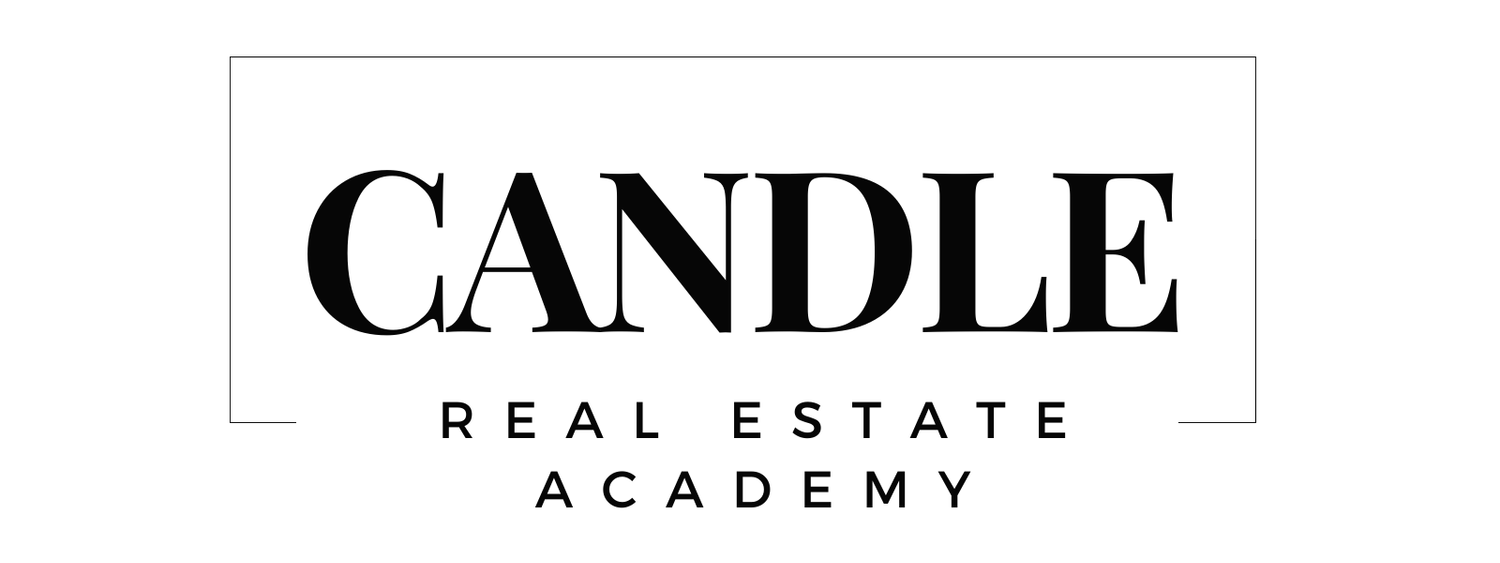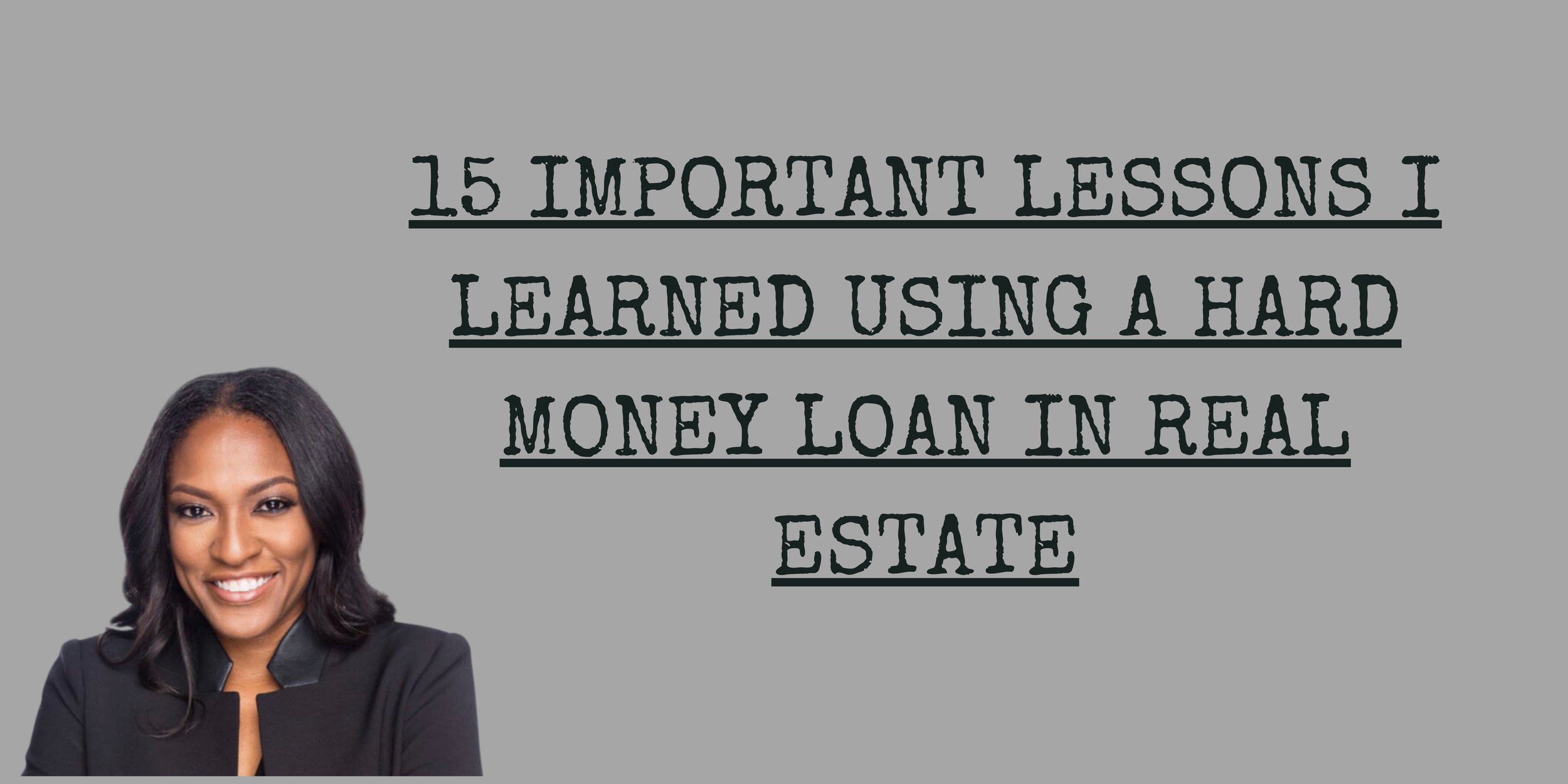9 Valuable Lessons I Learned Refinancing My Hard Money Loan
Near the end of finishing the "Resurrection House", I decided to hold this property and turn it into a rental property instead of selling it. However, I had a hard money loan.
Hard money lenders issue short-term loans, also known in the commercial real estate industry, as "bridge loans". to help purchase the property, and pay for labor and materials. The investor makes interest-only payments on the hard money loan with the understanding this loan type can only be used for 12 months. Then the principal loan balance is due. I had no choice but to refinance from this short-term loan into a long-term 30-year mortgage. I'm going to share with you nine valuable lessons I learn refinancing my hard money loan.
#1 Monitor your credit
While I was the project manager during the rehab of the Resurrection house I was not able to work full-time. so I decided to use my personal credit cards to pay for my daily and monthly expenses. In the beginning, I didn't see a problem with doing this method because I was going to use the profit from the sale of the property to pay off the credit cards. but using my cards increase my debt-to-income ratio and lowered my credit score.
I reached out to my investor-client and credit repair expert, Nick, who has flipped multiple properties. He told me it is easy to create poor credit as house flippers when first starting out. We over-leverage our credit. The only way to fix this was to pay off the debts. So he prepared me for what was coming next.
If I plan from the beginning to refinance I would have monitored my credit history and leveraged more of my hard money loan instead of using personal credit cards to keep my credit score high.
#2 Anticipate a higher interest rate
If your strategy is to use personal credit cards and even leverage a Home Depot or Lowe's card to pay for your materials, it is going to affect your debt-to-income ratio. When I applied for the DSCR (debt service coverage ratio) permanent financing loan, I came with experience so I was anticipating a lower interest rate of 4%, but since my debt-to-income ratio increased my credit score decreased. so I had to get a 30-year loan at a 6.5% rate. With the investors currently dealing with high-interest rates, when getting long-term financing, it's taking longer to find good deals where rental income can pay the mortgage and give us the desired profit at the same time.
#3 Have a long-term plan with the money you cash out
I cannot tell you how many clients I have had that sold or refinanced their properties and made a profit and they intended to use that money to buy more real estate but they did not. They ended up regretfully spending the money on immediate needs, vacations, or other things. Life would happen and they don't remember what they did with the money.
The purpose of the B.R.R.R.R. Method (Buy, Rehab, Rent, Refinance, and Repeat) is to pull the equity out of the house and buy another property. So once you decide to use this method have a plan for buying another property immediately or within a three-month period.
#4 Don't take out more than you need
With every refinance you don't have to cash out for the full amount. This property was in a small little town so I didn't want to take out more money than the rental income. There was enough equity to pull out and allow me to purchase another home outright in the area but I did not want to take on the risk of high monthly payments. There were so many lessons I learned in rehabbing the "Resurrection House". I wanted a mental break to figure out where and how I was going to continue building my real estate portfolio.
#5 Stick to your plan, once you change it.
Several of my investor associates told me the best way out of this hard money, rehab loan was to sell the house. However, I saw something bigger. One thing I love to share on my podcast is something my mentor told me when I started selling real estate with investors:
You put seven investors in front of a house, you will have seven different strategies, seven different entry points, and exit strategies. No one will do the same, but as long as it makes sense to the investor and they are reaching their goal, that's all that matters.
The "Ressurection House" is a ranch sitting on an acre. This property would be a good asset to my real estate portfolio because there are multiple strategies I can use with this property. At the time of the rehab completion, the ARV (after-repair value) was lower than I believed the property was really worth. So my strategy was to hold and wait for more comps to increase the value over time.
Upcoming Live Courses
#6 Prepare for a new appraisal
Just like traditional financing, the bank is not going to finance more than what they think the property is worth. Private money lenders also want the true value of the collateral so they are going to make you pay out of pocket for a new appraisal. Even though I just paid for one appraisal when getting the hard money loan three months prior. Unfortunately, they did not accept the loan from the hard money lender and they wanted a new one, so I spent $350 for a new appraisal.
#7 Ask, ask, ask.
I thought I asked all the right questions to the lender representative and my broker to make sure the financing terms made sense to me. I simply asked one question:
Will I be able to make extra payments because this loan is so low I want to pay it off early?
The loan officers that were communicating with me and even my broker all said "Yes, I could." I found out that was a lie. I did not find out until I was at the closing table and the closing attorney told me as he read the financing terms.
Luckily the closing attorney was also an investor. before we begin the signing I had shared with him my exit strategy, and that I wanted to pay this property off early and make this property unlevered.
So when we started the closing he came across the term called “prepayment penalty.” If I made an additional one cent to the mortgage I will be charged an additional $30 fee. Needless to say, I was infuriated. However, I had no choice because I was already at the closing table. I had no choice but to go ahead and proceed. My contractors were due a final payment and I promised them their money after closing.
During the closing, I paused to Google "prepayment penalties in real estate" and discovered that this was a common standard with a D.S.C.R. loan. With these terms, I would have to wait 5 years before I could give this company the middle finger and either pay off the entire loan amount or refinance the mortgage.
#8 Request to see all of the terms before you get to the closing table
They were still additional loan terms the broker nor the representative told me about. For example, investment property owners are not allowed to make the property a place for a primary residence. So the lender reserved the right to randomly request the lease agreement. If I did not provide a lease agreement they reserve the right to increase my rate by two points.
This would have been something I would have negotiated or requested to remove from the terms or even moved on to another lender. I understand that investors are not allowed to live in the house. However, the right for them to increase it by two points because a lease agreement is not provided is outrageous.
I had a million and one question at that closing however my closing attorney can only answer in limitations and only interpret what was in writing. Hopefully, you have learned from my #8 and you request to see everything in writing before you get to closing which I did not do. I asked the questions verbally and got a verbal response. If I ever do a cash-out refinance again I want to see all of the terms in writing before I even pay for the appraisal.
#9 Be careful choosing a broker and/or a lender
After this closing, I called my broker and express the anger and distrust I had in him and my new lender. The broker is not the lender. The broker is the middle person who gets paid a commission for matching an investor with a lender that will finance their project or property. Needless to say, we parted ways after this. I felt that he did not have my back and just wanted me to get to closing so he could get a commission. I was very vocal about my goals my extra strategy and the type of loan I was looking for. The numbers were incredible. With the high after-repair value, compared to the loan amount, this deal was not a risk to the lenders. However, I trusted him when he told me this was the best product.
There are so many lessons in this including me doing my own homework. You may be thinking, "Candle, why didn't you just meet with traditional banks and convert this into a conventional loan? It would have been a lot easier and the terms would have been cleaner and I can pay it off with no prepayment penalty. When you are applying to get a conventional bank loan you have to show consistent work and they have income requirements that must be proven from your income tax statements. This was not a good option.
I was an entrepreneur and sold real estate my checks were not consistent. I missed a full two and a half months because I wanted to be the project manager. Also, when you purchase rental properties with a conventional loan, you would need to put down an additional 10 to 20% down payment. This was something I did not want to do which is why I had to go with the DSCR (debt service coverage ratio loan) with a private money lender. The DCSR loan is perfect for buy-and-hold real estate investors who are non-traditional because we do not meet traditional mortgage standards.
Even now I still get angry about this loan and I will probably never forget the closing day. However, I have learned to make lemonade from these lemons. I'm glad I held "Resurrection House". The property at the time I refinanced was only valued at $130,000, the property value today is $215,000.
I hope my lesson will help you refinance your flip into a better experience than mine. I have shared the nine lessons I've learned from refinancing my flip. Comment below if you have any questions or if you want to share your experience doing the same.
Related Posts










Mondays & Thursdays
FEBRUARY 12 -MAY 2, 2024
6 pm- 9 pm
1302 Watson Blvd, Warner Robins, GA 31093